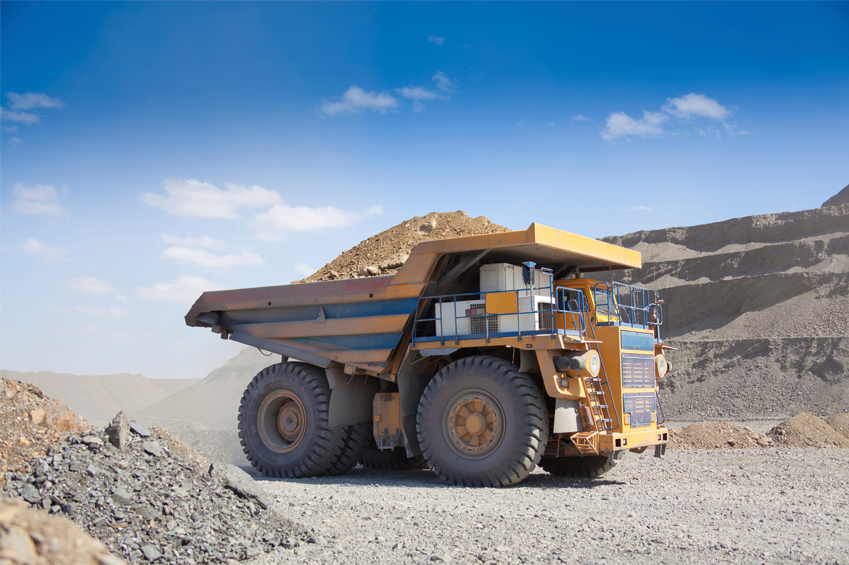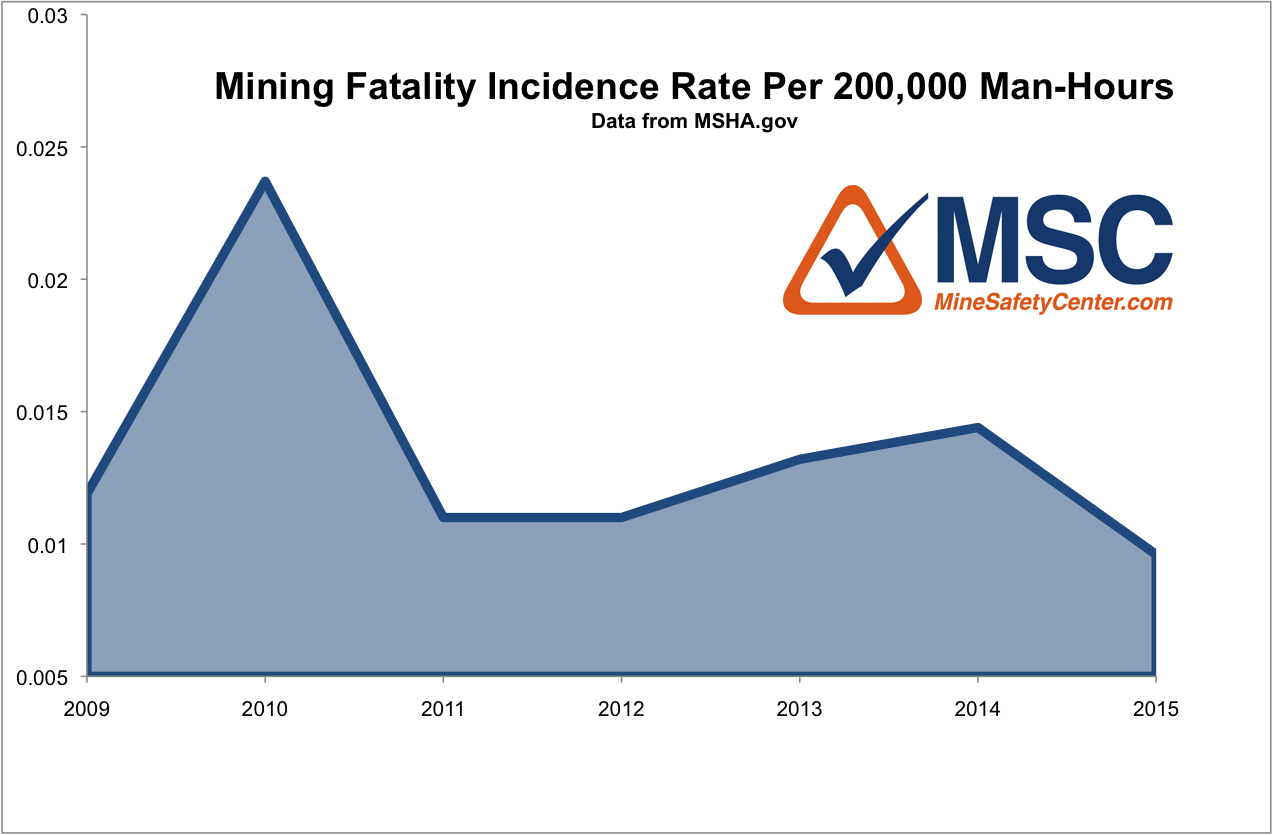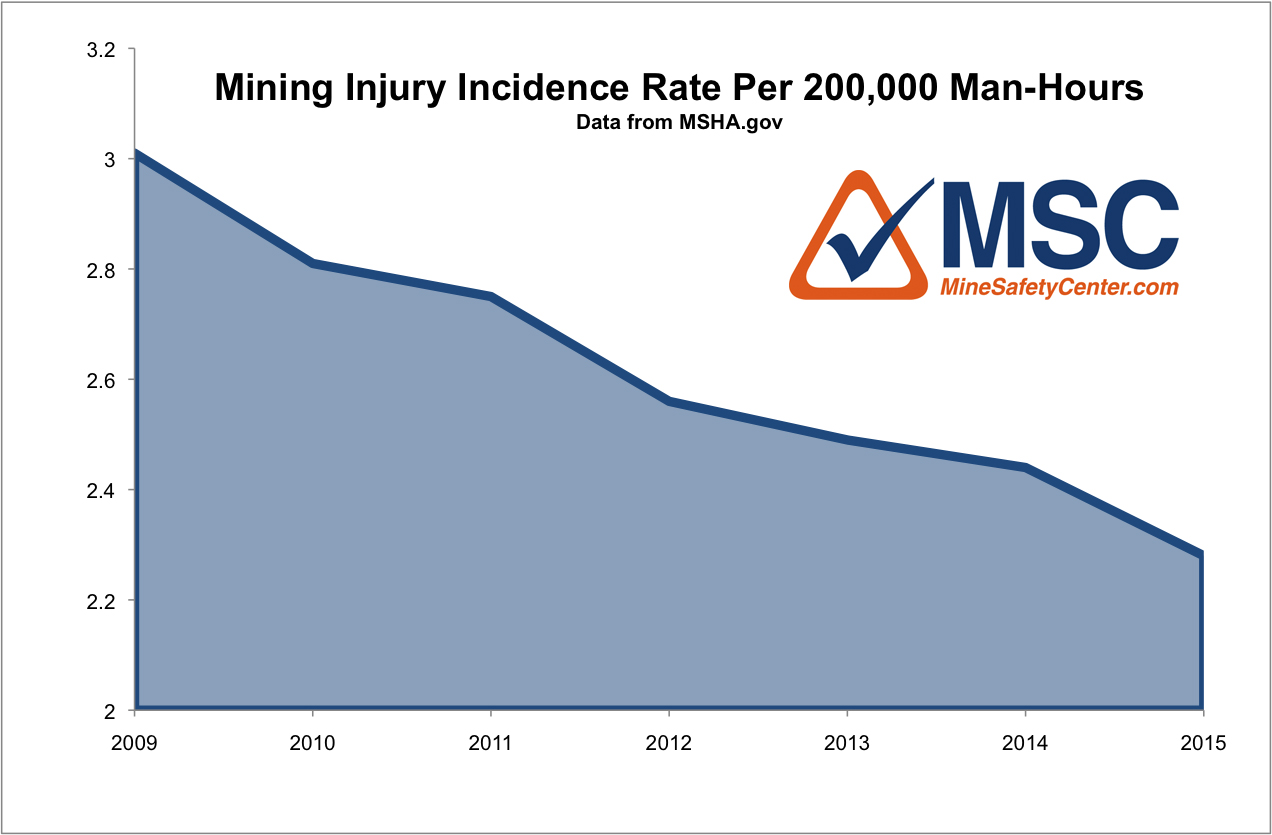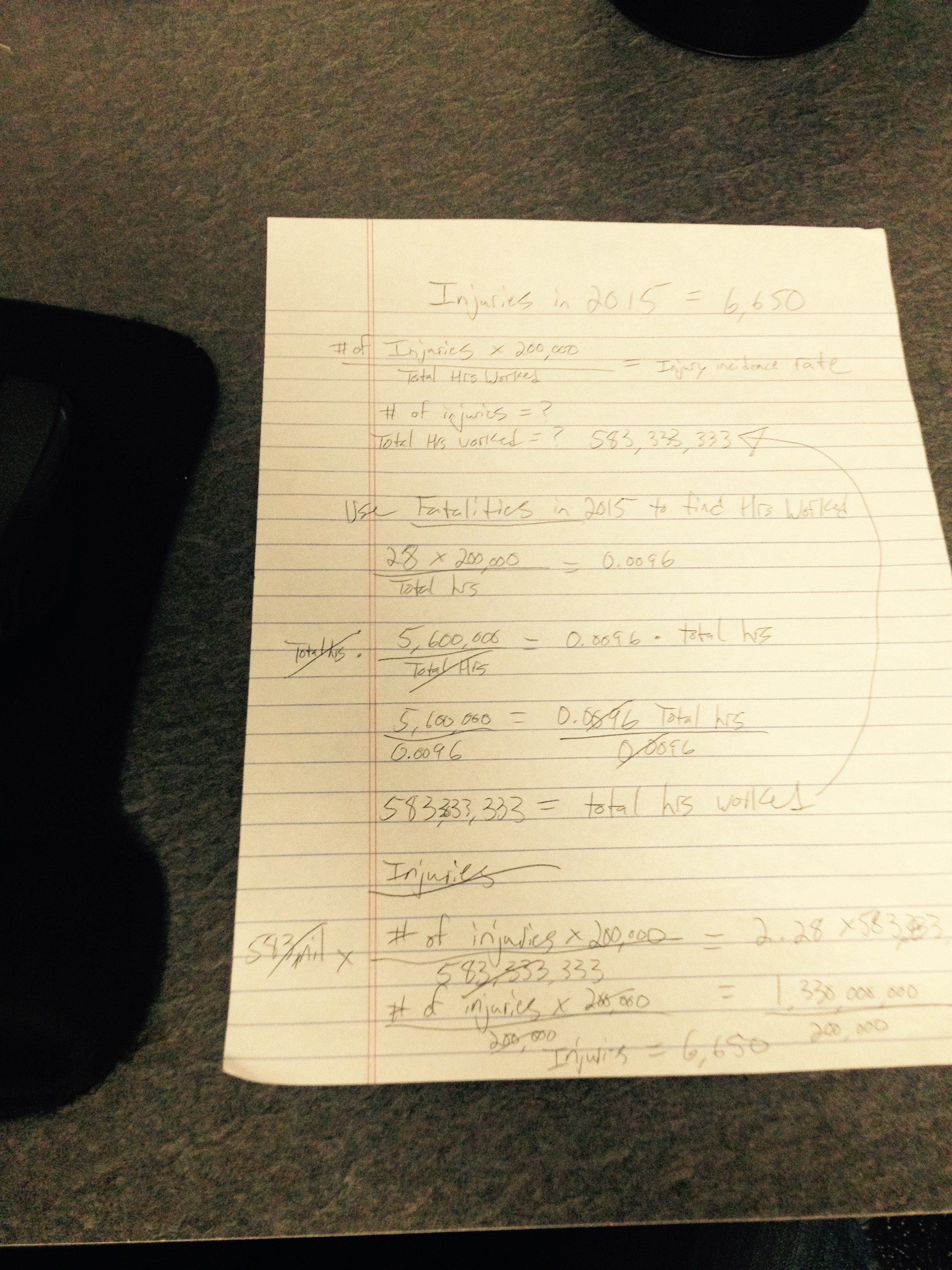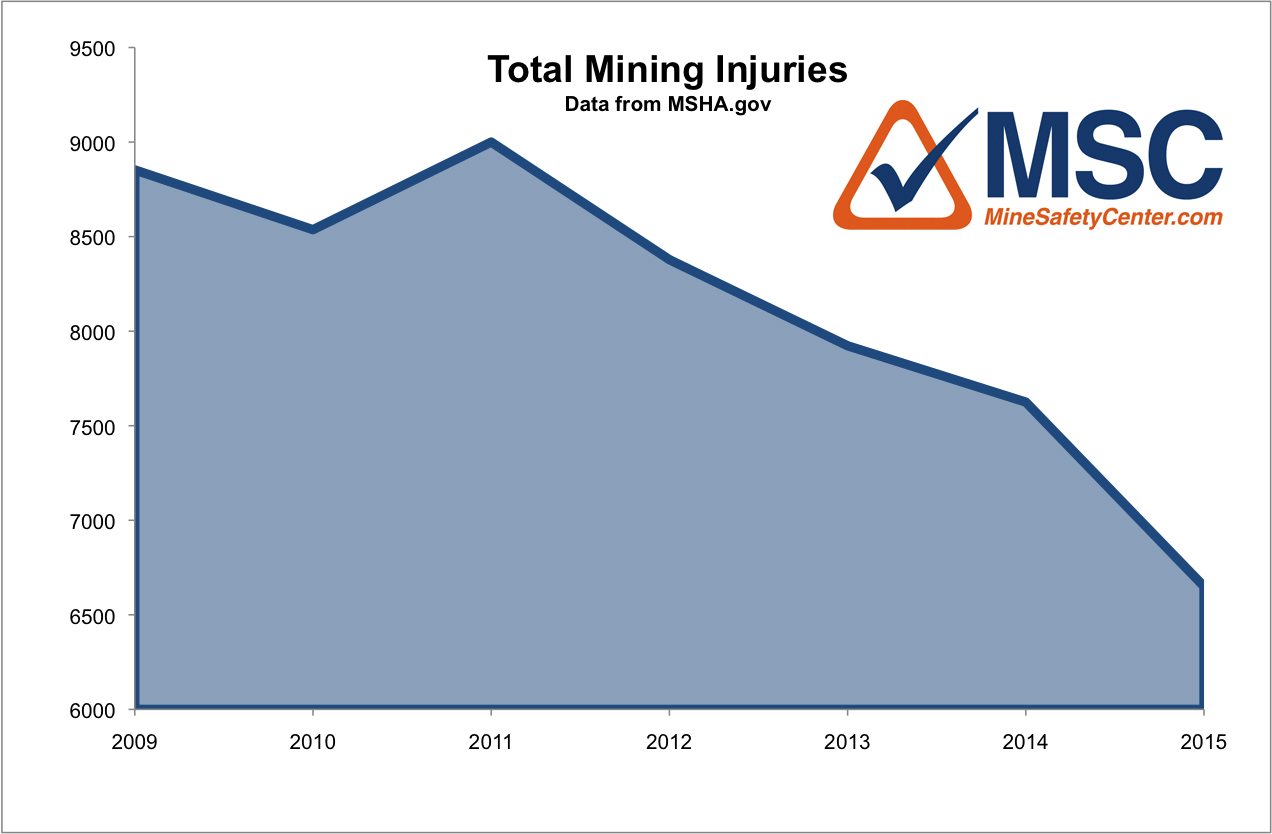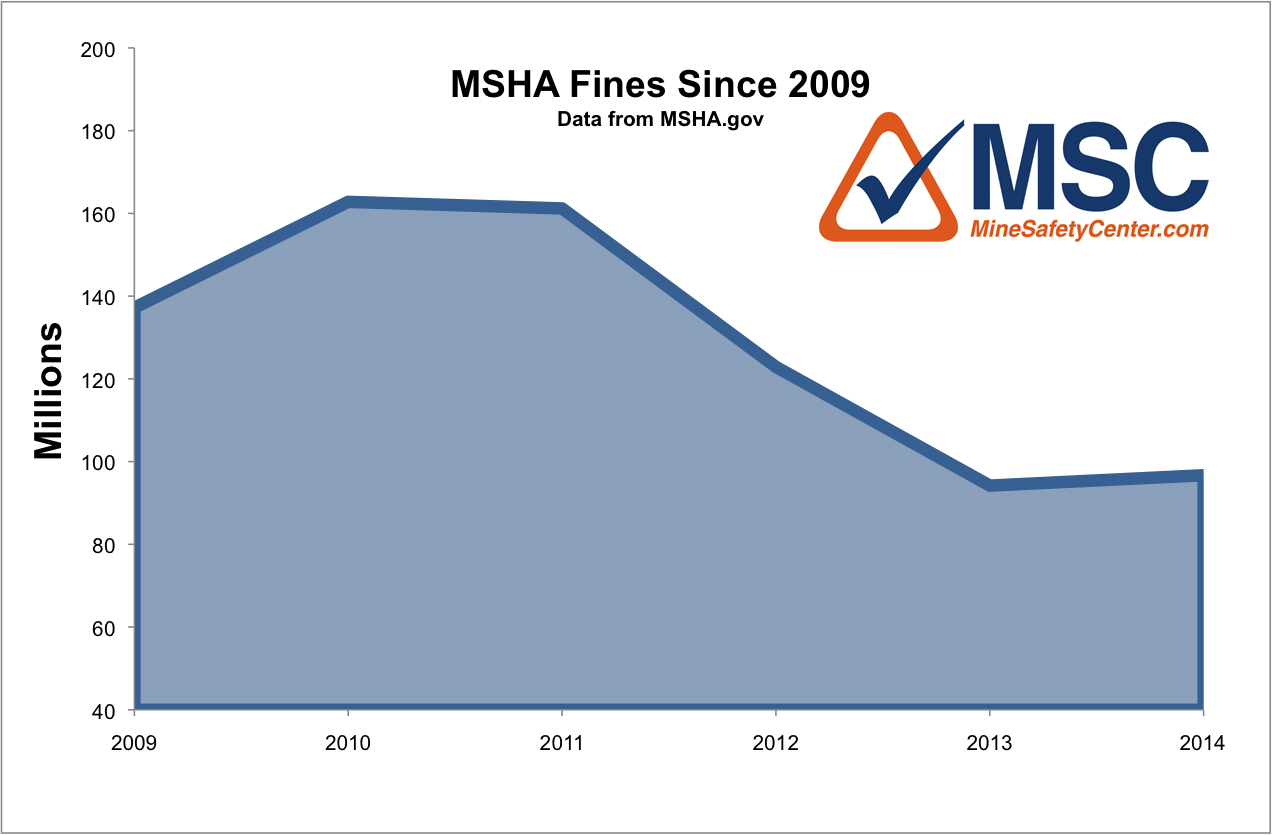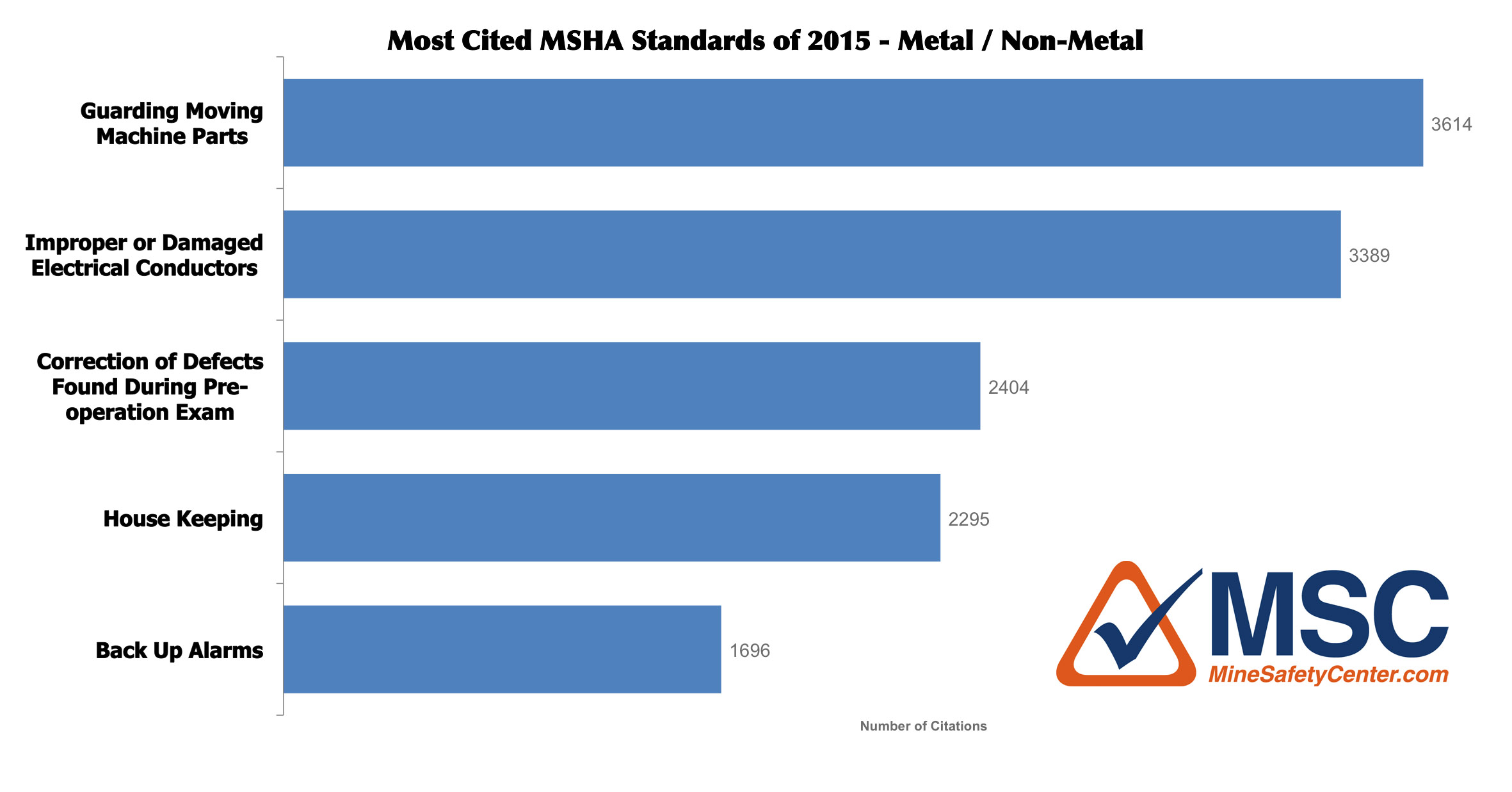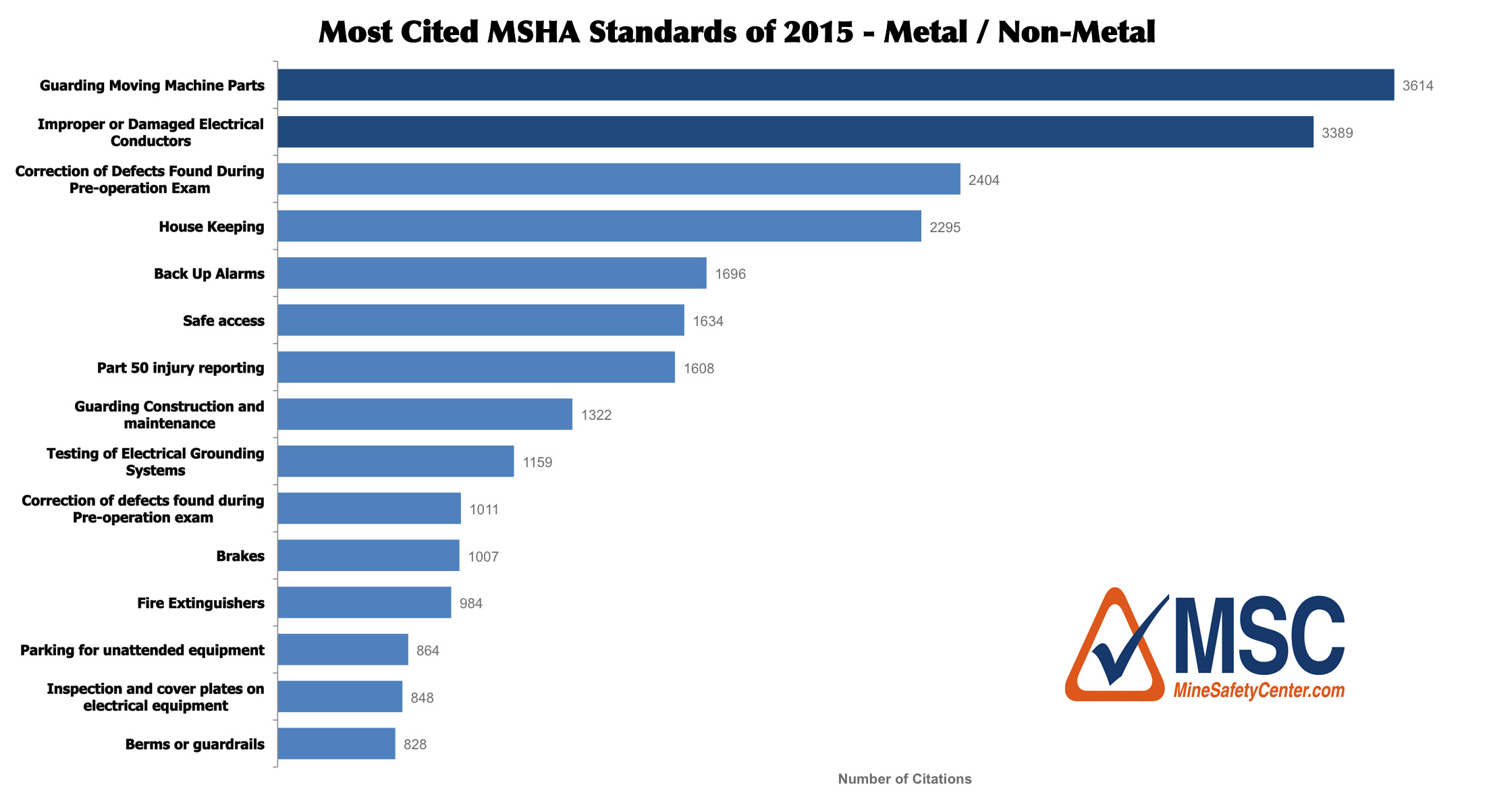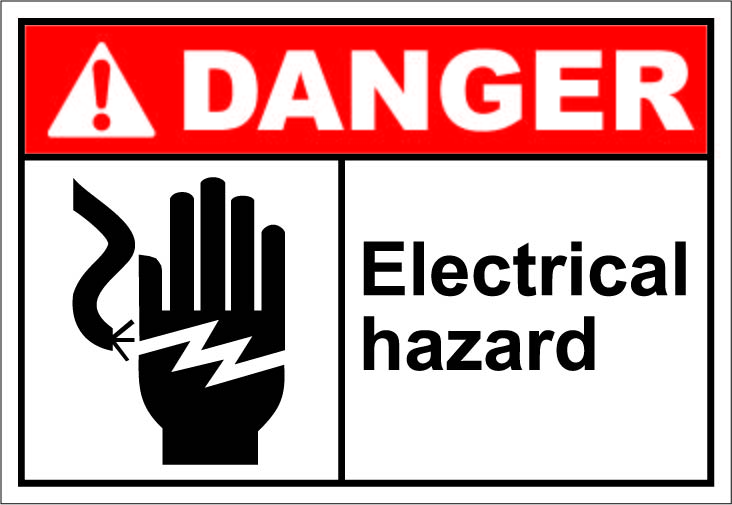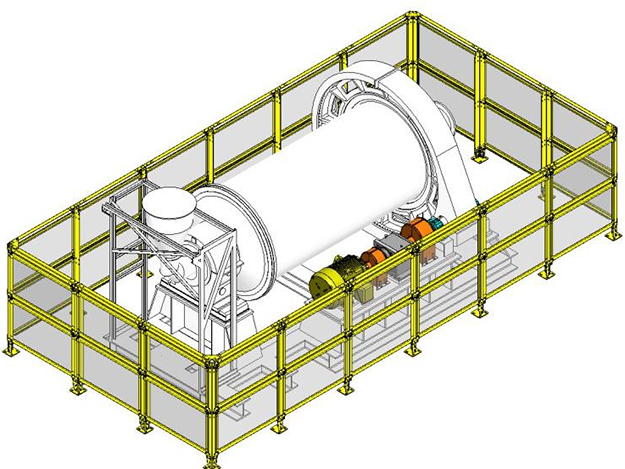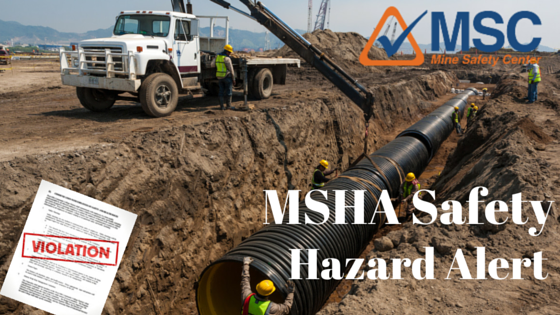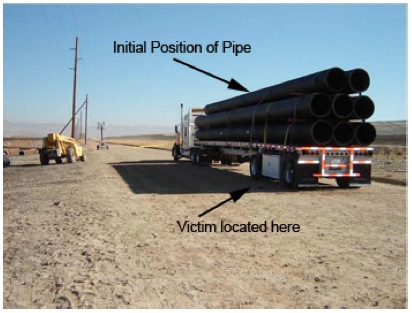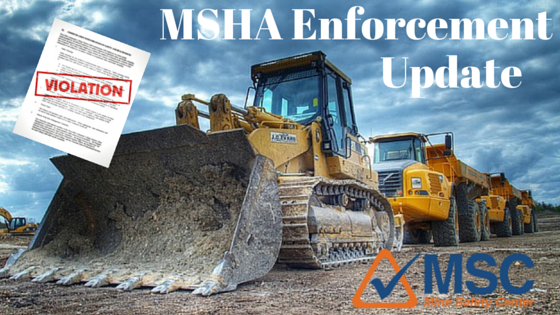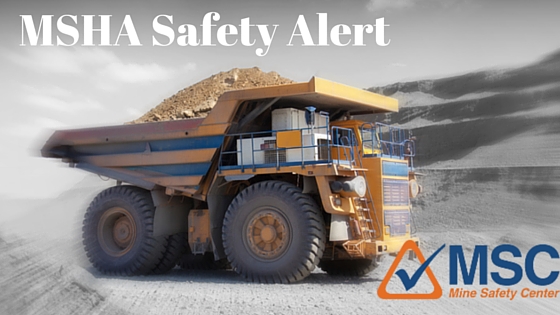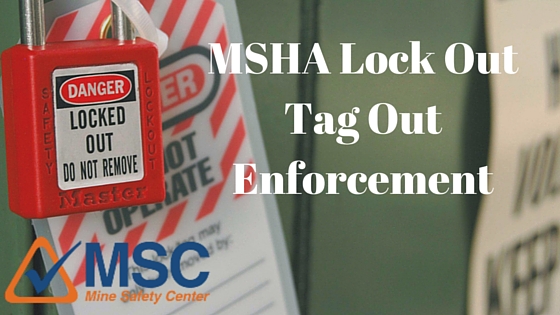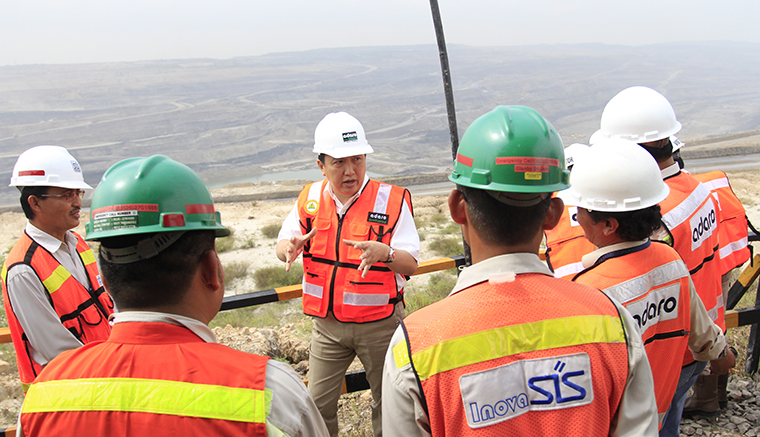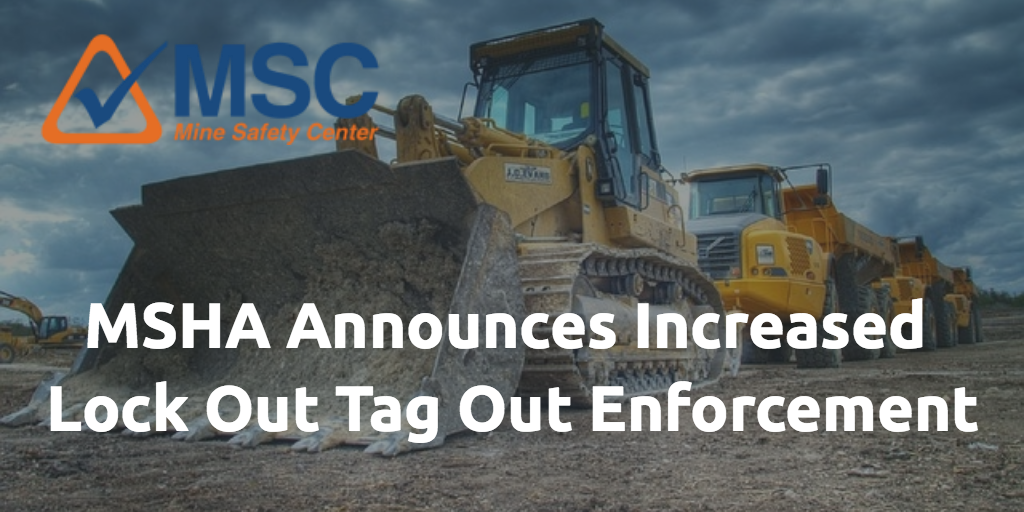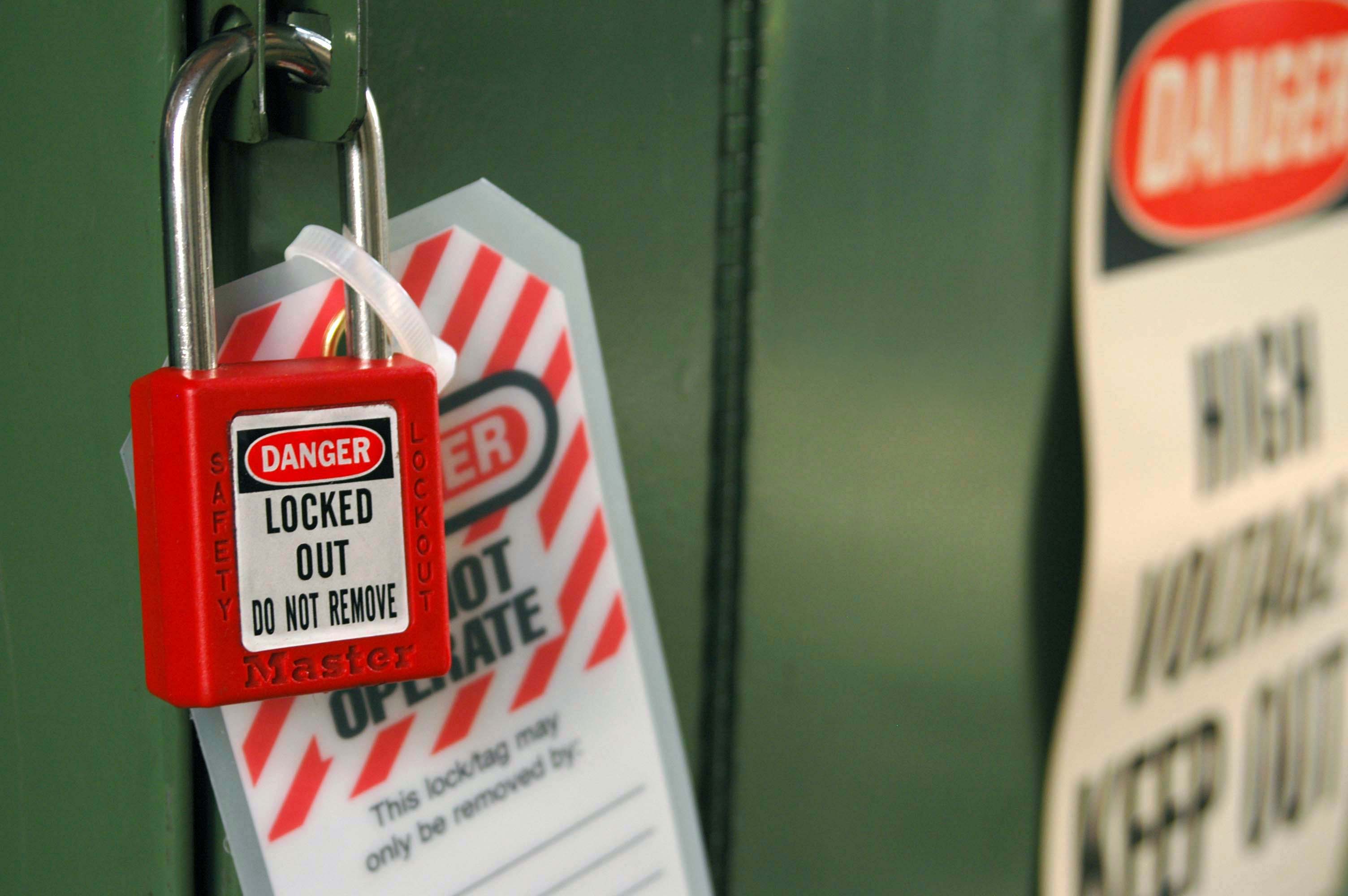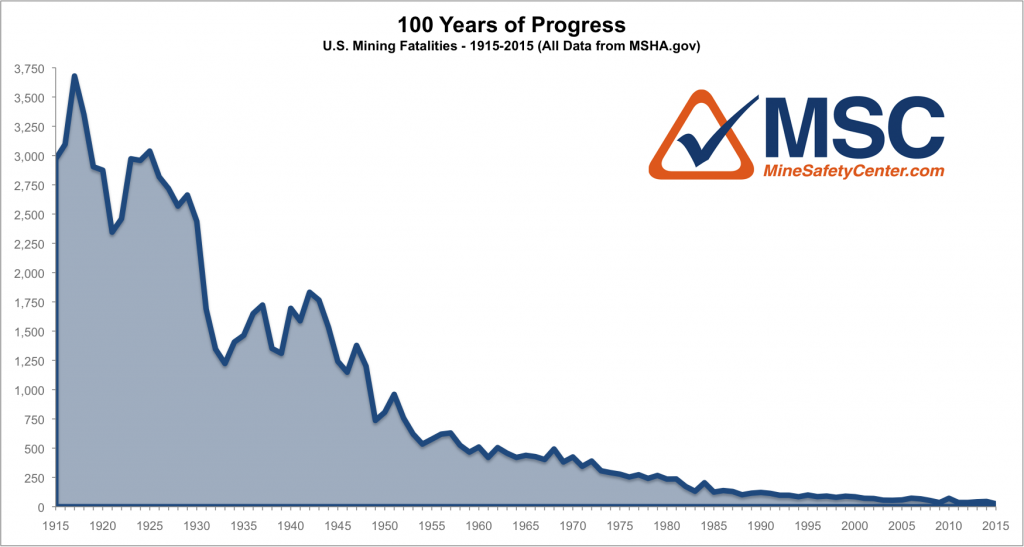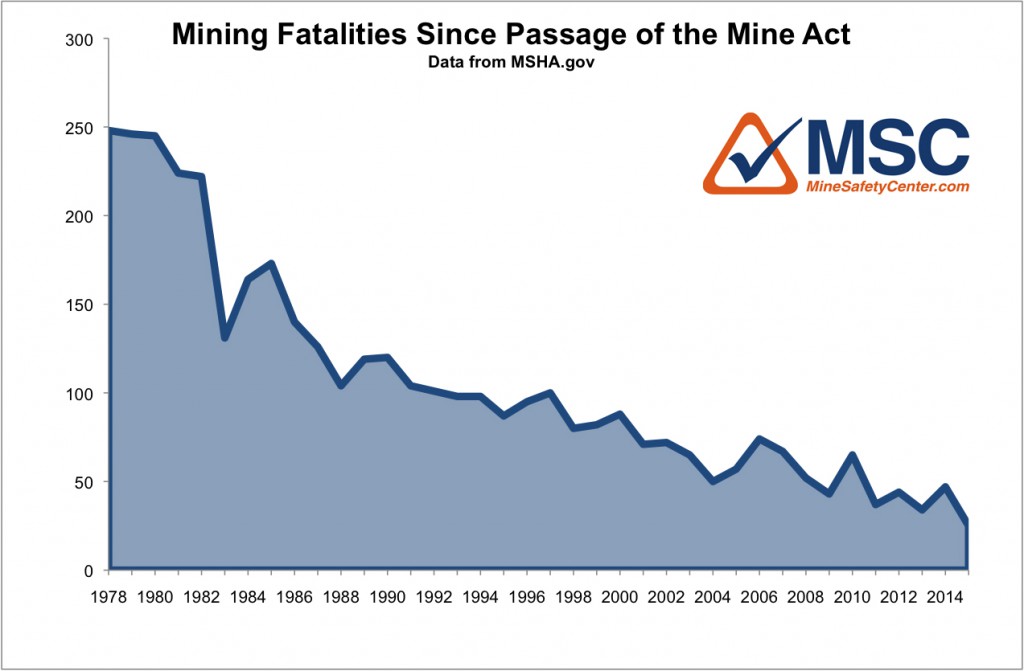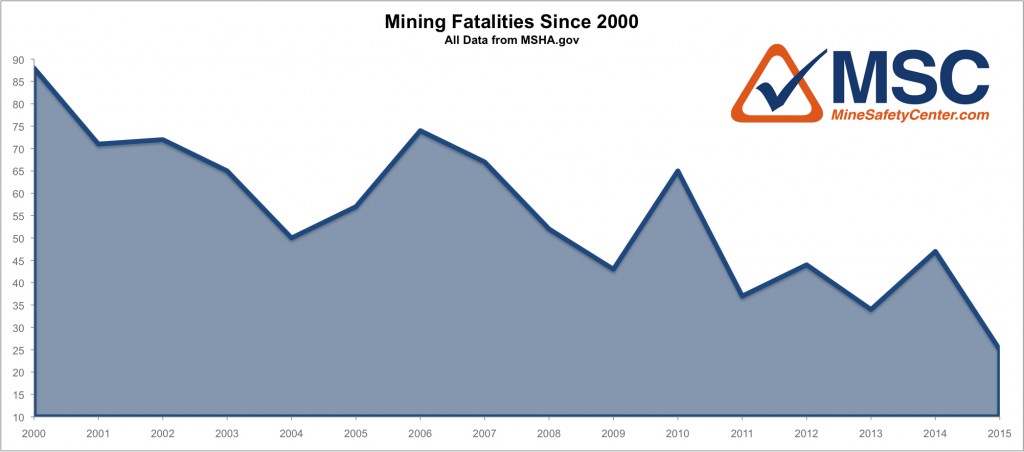It’s official, the new MSHA workplace exam rule will go into effect May 23rd, 2017. We covered this rule change when it was proposed in July. Safety officials and managers across the country had a negative reaction to the proposal, to say the least (more on that later).
What’s in the “New” MSHA Workplace Exam Rule?
Let’s review what’s happening with the MSHA workplace exam rule. There are 4 main changes that will have a massive impact on how mines across the country conduct their workplace exams.
The updated Workplace Exam standard requires:
- The examination be conducted before miners are exposed to adverse conditions.
- Affected miners be notified when a hazardous condition is found.
- A record of the examination include the locations examined, the adverse conditions found and the date of the corrective action.
And:
The final rule also requires that the examination record include: the name of the person conducting the examination, the date of the examination, the location of all areas examined, a description of each condition found that may adversely affect the safety or health of miners, and the date of the corrective action.
But the new rule isn’t new at all. This is from our article in July:
The “New” MSHA Workplace Exam Rule Has Already Been Tried and Is Ineffective
This proposed “new” rule, has been tried before and history has shown it doesn’t accomplish the goals of lowering fatalities and injuries. As anyone on a coal mine knows, a worker must have an MSHA Blue card in order to complete a coal mine workplace exam.
Essentially, MSHA has been individually verifying who is competent to conduct a coal mine workplace exam for years.
How has that worked out?
There have been huge, deadly disasters under MSHA’s watch where MSHA’s own report cited “insufficient workplace exam” as a root cause.
MSHA approved every person conducting those “insufficient” workplace exams.
Joe Mains cited the 122 deaths on M/NM sites from 2010 to 2015 as a reason this new law is necessary. But how will this standard improve safety at M/NM operations when it hasn’t worked in coal mines? Insanity is trying the same thing over and over while expecting different results.
The most insane detail comes from MSHA in the proposal itself:
“MSHA is unable to quantify the benefits from this proposed rulemaking, including the proposed provisions that an examination of the working place be conducted before miners begin work in an area”
The people proposing this rule admit there is no evidence it will improve safety. And there is a reasonable argument this rule will make miners LESS safe which we also went over this summer:
MSHA wants workplace exams conducted with documentation of all “adverse conditions” (the definition which was not clarified by MSHA, mind you) “before work can commence.”
Unfortunately, there’s a gaping hole in this thought process that could affect mines all over the country. What about the rest of the day?
A changing environment is in the nature of mining. Site terrain changes when you remove dirt. That’s a law of nature. That doesn’t even take into account constantly changing stockpiles or wear and tear on machines and tools.
Won’t the New Administration Throw Out the Rule?
Here’s the deal:
No one knows how President Trump is going to handle this. He may choose not to enforce it but there are still a lot of moving parts and Senate confirmations before anyone can make a prediction.
Even if a Trump Administration decides to delay enforcement, he can’t throw out the regulation. There is no legal way for him to take it off the books now that it has gone through the public comment period. That means eventually when a Democrat takes the White House, this rule will be waiting for their Assistant Secretary of Labor for Mine Safety.
This new MSHA Workplace Exam rule will be implemented. It’s just a matter of when. And when it is enforced you NEED to have all your ducks in a row.
What’s So Bad About This Update To The MSHA Workplace Exam Rule?
Many mine safety personnel and managers across the country spoke out against this rule during the public comment period. Let’s take a look at what they have to say.
The proposed rule is focused on workplace conditions, but not the behavior of workers.
The proposal targets a false problem. The historically low injury rates achieved by industry demonstrate a collective commitment to safe practices. These rates are not achieved by luck or by fluke: aggregates operators take their safety responsibilities seriously, including the identification of hazards and unsafe conditions. What MSHA is overlooking is that the overwhelming majority of injuries and accidents are functions not of inherently unsafe conditions but of unsafe behavior of either management or workers. MSHA’s proposed workplaces examination rule will laden operators with costly additional administrative burdens while doing nothing about the predominant source of workplace injuries – the carelessness by some in the workplace. We have seen in recent years that safety improvements focused on improving behaviors of workers are more effective at reducing injuries than ones focused on workplace conditions.
Joseph Casper, VP of Safety, NSSGA
Saving miners’ lives is important; we’d just like to see the evidence out there that this particular rule is going to advance that cause.
A real concern, however, for mine operators is that the new rule may have unintended consequences of just being another way to cite mine operators. For this rule to have validity with the workforce, it needs to be seen as protecting workers, not just as a punitive tool.
These concerns are not that far-fetched, as some recent examples of MSHA’s citations might attest to. An operator was cited for a sign that stated “no smoking, matches, or open lights” in this area, because the standard requires the same sign to say “no smoking or open flames.” One word. An operator was cited for using the incorrect font on a site-specific training checklist, and an operator was cited for not including the middle name of an employee on a task training certificate.
Brian Bigley, Safety Manager-Lehigh Southwest Cement Plant Tehachapi, Representing CalCIMA
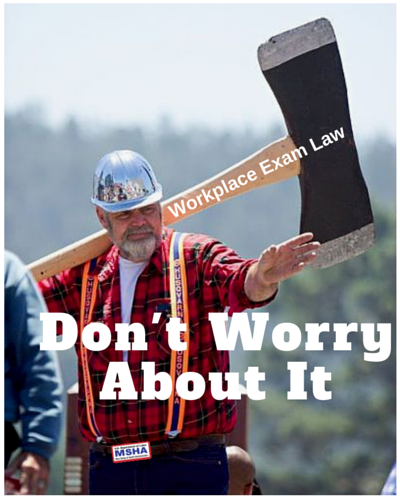
There are hundreds of quotes like those in the public comments. We’re still grappling with the far-reaching effects of this rule change. Some of the initial issues are:
- Will MSHA workplace examination forms need to completely change?
- How will mine administrators keep up with this additional paperwork?
- Who is going to complete these new workplace exams? Management? Workers? Do workers need to be listed as “Competent People”?
- How will MSHA inspectors interpret “adverse condition”?
- How will management make sure every “adverse condition” noted on a workplace exam form is then followed with when it was fixed?
We’ll try to answer all of those questions (and the dozens I’m sure will pop up) in future articles.
The Mining Industry In The U.S. Just Concluded Its Safest Year Ever
Preliminary statistics released by MSHA the afternoon of Thursday, April 7 show that 2015 was the safest year ever in the U.S. mining industry. This closely mirrors the fatality analysis I conducted earlier this year. Mining deaths are down across the board and have been trending that way for decades.
“In 2015, 28 miners died in mining accidents, down from 45 in 2014,” says Amy Louviere, MSHA’s media contact, in the press release.
But the announcement also released more granular data for 2015 than was previously available. This data allows an in depth analysis of the injury rate and total number of injuries. Ms. Louviere continued:
These rates are calculated based on hours of miners’ exposure, a relative measure taking into account recent employment changes in the mining market. The fatal injury rate, expressed as reported injuries per 200,000 hours worked, was the lowest in mining history for all mining at 0.0096.
Take a look at the progress on this key statistic over the last few years:
Mining Industry Injuries Down
But even more impressively, the mining injury incidence rate (again per 200,000 man-hours) dropped significantly. According to Ms. Louviere, “the all-injury rate – reported by mine operators – also dropped to a new low in 2015 at 2.28.”
Not only are less injuries leading to fatalities, there were also less injuries. Period.
Injuries and fatalities lowest ever in mining industry. Even when adjusted for man-hours worked.
Look at the trend over the last few years. This is outstanding progress:
The injury incidence rate is down 25% since 2009.
What does the injury rate translate to in actual numbers? After consulting this very cool incidence rate calculator (and brushing up on a little Algebra) I was able to figure out the total number of hours worked and injuries.
The mining industry combined for a total of 583.3 million man-hours in 2015. During that time, 6,650 total injuries occurred. Again, this number of injuries is a significant drop off. So while man-hours were down 7% from 2014 to 2015, the number of injuries dropped an impressive 13%.
Mining Industry Contractor Safety
Contractor fatalities were also down. In 2015, 8 contractors lost their lives compared to 12 in 2014. Obviously, a single loss of life is too many but a downward trend is great news. Unfortunately, MSHA doesn’t release the Total Injury Rate for Contractors.
The spike in overall fatalities and particularly contractors caused MSHA to declare a surge in the M/NM sector. These trends are promising but don’t look for MSHA to pull back their enforcement any time this year.
“The progress we made in 2015 is good news for miners and the mining industry. It is the result of intensive efforts by MSHA and its stakeholders that have led to mine site compliance improvements, a reduction of chronic violators, historic low levels of respirable coal dust and silica, and a record low number of mining deaths,” said Joe Main, assistant Secretary of Labor for Mine Safety and Health.
In other words, expect MSHA to continue their recent uptick in enforcement and inspections across the mining industry.
MSHA Fines Down
There is also another surprising piece of information in the article that could potentially be overlooked. The amount of MSHA fines is trending down. MSHA doesn’t count contested fines in these statistics which leads to artificially low numbers (MSHA reported $62.3 million collected for 2015, a giant drop from the $95 million average in 2013 and 2014.) So as cases wrap up, the total for 2015 will increase. But even if we throw out the artificially low 2015 numbers, the trend is still there. Even with this drop, MSHA inspectors still have a few tricks they like to try.
The most MSHA fines collected in a year occurred in 2010 with $162.8 million dollars. But since 2012, the trend has been decidedly downward.
This is good news for an industry that has had a very hard year. Safer mines and fewer fines? That’s something the mining industry and MSHA can both get behind.
Let’s work towards continuing both trends in 2016.
How To Avoid The 5 Most Cited MSHA Standards of 2015
Ever finish a Mine Safety and Health Administration (MSHA) inspection with your head spinning? You feel confident when the inspector arrives. Then the notepad comes out. Did the experience leave you with questions? Saying to yourself “How did we get hit for those MSHA standards? We run a good operation. How did we get so many fines?”
Obviously, MSHA citations are costly. But on top of the financial penalty, there are more subtle costs. Unlike money spent on training or workplace safety improvements that can prevent citations, MSHA fines aren’t tax deductible. MSHA citations also cost your company man-hours through additional inspections and time spent contesting the tickets. Finally, S&S citations affect your POV status, which can lead to even more fines if MSHA determines you have a Pattern of Violations.
Knowing where MSHA inspectors are looking, what they’re looking for and what they’re citing is valuable information. This information can give your team a path to go above and beyond your standard work safety and inspection procedures in targeted, high value areas.
That’s why I took a deep dive in the data provided on MSHA.gov. Let’s examine which Metal Non-Metal (M/NM) MSHA standards were cited most in 2015 and compare them to 2014. We can begin to see where MSHA is devoting their time and resources.
Spoiler: It doesn’t always match their many enforcement announcements. I know, you’re shocked.
The Most Cited M/NM MSHA Standards of 2015
MSHA citations at M/NM locations were essentially flat from 2014 to 2015. In 2014 there were 60,155 M/NM MSHA citations and 60,075 in 2015, a decrease of 0.01%. What were the top 5 most cited MSHA standards in 2015?
As you can see, Guarding and Damaged Electrical Conductors are far in front of the pack. That’s even more apparent when we look at the Top 15 standards in the next graph.
The 5 most cited MSHA Standards accounted for over 23% of all M/NM violations in 2015 and 22.8% in 2014. The 2 most cited MSHA standards accounted for 12% of all tickets written in 2015, more numbers 10 through 15 combined (11%). Focusing resources to improve your compliance is an efficient way to reduce your MSHA fine exposure.
How Do The Most Cited MSHA Standards of 2015 Compare to 2014?
There was only one change in the top 5 from 2014 to 2015. Part 50 injury reporting was replaced by house keeping in 2015. The number of Part 50 citations decreasing is an interesting development considering MSHA announced an increased emphasis on Part 50 reporting.
[infogram id=”msha_fines_2014_v_2015″ prefix=”yZk”]
How Can You Reduce Your Risk of Fines for These MSHA Standards? Let’s go through the standards one by one.
5. Back Up Alarms – MSHA standard 56.14132(a)
Manually operated horns or other audible warning devices provided on self-propelled mobile equipment as a safety feature shall be maintained in functional condition.
MSHA regulations require back up alarms are functional and must “be heard above the surrounding noise.” That phrase is very subjective and open to interpretation by the inspector. What one inspector would let go another may not. This is where most citations for this MSHA standard are written.
If a back up alarm isn’t operational, by law you can have a spotter as a substitute and still use that vehicle. But the spotter must be with the vehicle the whole time it’s in use. Not a very practical option and certainly not an efficient use of resources.
Back up alarms can cause complacency. We hear them all day long. It can become just another noise in the background. For example in 2004, 14 people were killed in Washington State backing accidents. The back up alarm was fully functional in every incident. The situation was so serious the state legislature passed an emergency law requiring all trucks dumping on construction sites to have spotters.
“The CDL test advocates that over the road trucks should try to minimize backing up, because of blind spots, and potential to hit something or someone,” said former MSHA inspector and Mine Health & Safety consultant Kim Redding. “The best practice to prevent backing incidents and citations is to set up your whole operation so there’s little or no need to back up. Obviously this is impractical or prohibitively expensive for some.”
He continued, “If this option isn’t available, make the danger of backing top of mind at your company. Backing is one of the largest causes of injuries and damaged equipment. Everyone on your site should know and understand they shouldn’t back up unless absolutely necessary.”
4. House Keeping – MSHA standard 56.20003(a)
Workplaces, passageways, storerooms, and service rooms shall be kept clean and orderly.
This is a very broad standard. You can get a ticket for a disorganized workshop, a messy vehicle cab, even a dirty microwave. Spilled materials are commonly cited under 56.20003(a). Any dust or silica build up can be seen as a trip hazard.
“When I was an MSHA inspector I saw poor housekeeping as a red flag,” said Kim Redding. “If you can’t do the simple things like cleaning up your work place, it’s more likely the big things won’t be done either.”
A clean work environment makes your company safer and more productive. Potential hazards easier for your company to spot and fix immediately when an area is clean and organized. As Jamie Ross of Mining Man puts it “don’t leave a trap for somebody else.” As you walk around your site, take a look for areas that could be tidied up.
Putting an emphasis on house keeping is a simple way to quickly make a site safer and more MSHA compliant. Employees don’t waste time looking for tools and equipment in an orderly shop.
3. Timely Correction of Defects Found in Pre-Operation Exam – MSHA standard 56.14100(b)
Defects on any equipment, machinery, and tools that affect workplace safety shall be corrected in a timely manner to prevent the creation of a hazard to persons.
Complying with 56.14100(b) should be straightforward but MSHA has a curveball. Even if you fix a defect you can still get a citation. How? As top mining attorney Mike Heenan said in a great interview with Pit & Quarry, “too often, operators only write down what the problem was, so you have a list of problems without a list of solutions. Maybe the operator has fixed those problems listed, but they might not write that down. You have to finish up the story in writing.” In this situation, some inspectors will write a citation, others may not. It’s up to your operation to take away the opportunity for a ticket.
2. Improper or Damaged Electrical Conductors – MSHA standard 56.12004
Electrical conductors shall be of a sufficient size and current-carrying capacity to ensure that a rise in temperature resulting from normal operations will not damage the insulating materials. Electrical conductors exposed to mechanical damage shall be protected.
A thorough workplace exam is essential to compliance with 56.12004. Many conductors are exposed to weather, impact, vibration, abrasion, and heat. Inspection of electrical conductors must always be a part of workplace examinations. Schedule inspections on a regular basis for areas of your operation that are less frequently traveled.
If anyone discovers a violation it must be dealt with right away. Many times a health and safety hazard can become part of the workplace if it’s noticed but left uncorrected. It’s human nature. That’s how hazards don’t get fixed and become violations.
1. Guarding Moving Machine Parts – MSHA standard 56.14107(a)
Moving machine parts shall be guarded to protect persons from contacting gears, sprockets, chains, drive, head, tail, and take-up pulleys, flywheels, couplings, shafts, fan blades, and similar moving parts that can cause injury.
Guarding is by far the most cited MSHA standard and it’s been that way every year for the past decade. Don’t expect that to change in 2016, especially since the first fatality this year was a person killed when they got caught in a conveyor.
There is a clear history of inconsistent enforcement of MSHA regulations. Guarding is particularly hit or miss because the standard is extremely subjective. One inspector may cite you for an area that another inspector has approved for years.
In his interview with Pit & Quarry, Mike Heenan remarked, “It’s amazing to me in all these years that machine guards continue to be up there with other violations. It’s been my contention for a long time that MSHA should spend less time finding citations and instead finding more important things in Rules to Live By.”
“Many times I’ll tell operators their guarding isn’t MSHA compliant,” Kim explains “and they say ‘There’s no way, these are factory guards!’ Just because the guards came from the factory doesn’t mean they’re MSHA compliant. The factory builds on spec. If you don’t specify you want something guarded, they won’t do it. They’re a business that needs to keep their margins up just like you. On top of that, MSHA won’t cite the manufacturer for the violation. It’s your job as a mine operator to request MSHA compliant guarding.”
The best way to protect workers and reduce your risk of citations is to guard all moving machine parts. That includes bolt heads, key ways, couplers, everything. Box in every moving part, everything, so no one can touch, get near a moving part or in a restricted area. MSHA inspectors can and will contort their bodies to show there is a “possibility” someone could be injured.
In the most basic terms, the potential for an MSHA citation exists if an adult sized toddler could touch anything dangerous.
Key Takeaways – Health and Safety at Work
There is a definite trend in the most cited MSHA standards. Nearly all of the rules are open to interpretation. Every MSHA inspector is different and you may have 2 inspectors interpret the rules in completely different ways. You can either leave it to the luck of the draw or be proactive and engineer your operation so there’s no opportunity for an inspector to cite you. But you have to make that decision for yourself and your company.
Because they’re cited so much more often, you can get the most return on your investment by aggressively focusing your compliance efforts on the top 5 MSHA standards above.
Sign up for more MSHA tips and updates.
MSHA Safety Hazard Alert
Late yesterday afternoon Neal Merrifield distributed yet another MSHA Safety Hazard Alert. He begins:
Since 2008, six persons have died at metal and nonmetal mines in accidents involving large diameter plastic pipe. Two delivery truck drivers were killed while their flatbed trucks were being unloaded at the mine. In both cases, an unsecured section of pipe rolled from atop the truck’s load of pipe, fell and struck the driver as he stood nearby. Two pipe crew supervisors, one a contractor, died while connecting sections of pipe using excavators and lifting straps to support and position the pipes. One died when the pipe slipped out of the strap and struck him; the other was killed when the pipe sprung out of the positioning cradle and struck him. A pipe foreman and a contract laborer were killed when they were struck or crushed by the pipe while assisting excavators re-position long sections of pipe using lifting straps.
Again, MSHA mentions their increased use of walk and talks, however this time without a veiled threat:
MSHA plans again this month to continue walk and talks at mine sites and enlist the assistance of mines, miners and mining industry groups in the effort to raise safety consciousness, stay safety-vigilant 24/7 and send miners home every day at the end of their shift.
That’s a sentiment we can all get behind. Though there were too many tragic deaths last year, 2015 was overall the safest year ever for the mining industry.
The alert also included some practical information.
MSHA standards require that materials not be stacked in a manner that creates a fall-of-material hazard, that taglines be attached to loads that may require guidance or steadying while suspended, and that hitches and that slings used to hoist materials be suitable for the particular material handled.
Our Recommended Best Practices – Lifting and Handling Plastic Pipes
Here are some best practices for lifting large objects of any kind with a few specific to plastic pipes:
- Task train all persons prior to performing work.
- Secure loads on trucks, forklifts and cranes.
- Establish and discuss safe procedures before beginning work. Identify and control all hazards with the work to be performed along with the methods to properly protect persons.
- Ground personnel should be highly visible. Unauthorized persons should be kept clear of the area. Examine work areas during the shift for hazards that may be created as a result of the work being performed.
- Verify slings are in good condition and securely attached before beginning a lift.
- Stand clear of items of massive weights having the potential of becoming off-balanced while being loaded or unloaded.
- Use taglines of sufficient length to adequately protect persons.
- Keep pipes as straight as feasible to avoid any spring-like motion.
- Evaluate the stability of the material before unfastening a load. Pay particular attention to loads that may have shifted or become unstable during transport.
- To prevent pipes from falling when the load is unfastened, secondary supports (such as side stakes) may need to be installed before the load.
- Unload materials on level ground and in a safe, controlled manner.
- Monitor personnel routinely to determine that safe work procedures are followed.
For more detailed information you can consult this post from North American Pipe Co.
A number of MSHA safety hazard alerts have been issued to open 2016. Now is the perfect time to conduct a thorough examination of your operation and equipment. Ensure everything is MSHA compliant and in working order before operations ramp up in the spring.
Never miss an MSHA enforcement initiative again. Sign up to have MSHA and industry updates sent right to your inbox.
MSHA Safety Enforcement Alert Announces Vague Initiative
After last week’s serious incident, today brings another MSHA safety enforcement announcement and boy is it broad. MSHA’s M/NM Administrator Neal Merrifield begins the announcement:
Since 2011, 16 metal and nonmetal miners have died in accidents involving machinery and non-haulage mobile and quarry equipment, and many more have been seriously injured or disabled. Of the 16 persons fatally injured, six were supervisors and three were contractors. Seven miners died when they were struck by the equipment they or a co-worker were operating, four miners drowned when their equipment ran into or overturned into water, and five more died when they were caught in crushers, on drill steel or between reciprocating machinery. The equipment involved represented a wide variety of mining equipment: drills, dozers, excavators, graders, dredges and crushers… MSHA plans again this month to continue walk and talks at mine sites and again enlist the partnership of mines, miners and mining industry groups in the effort to raise safety consciousness.
I’ll repeat that, “drills, dozers, excavators, graders, dredges, and crushers.” MSHA is essentially announcing close inspections of all machinery and equipment used in the process of mining. Their stated purpose is admirable as always, but you have to consider MSHA’s previous methods of “raising awareness.” Recent history tells us it will likely involve increased inspections, citations, and fines.
This is the 5th announcement of increased MSHA safety enforcement in just the past few months. MSHA has announced an enforcement “surge” on M/NM mines which includes transferring inspectors from coal to M/NM, an emphasis on confined spaces and Lock Out, Tag Out, Try Out procedures, and Part 50 injury reporting. They have also been given funding to hire more MSHA inspectors.
Merrifield goes on to offer some best practices:
MSHA standards require operators to maintain control of mobile equipment while it is in motion, and to operate at speeds consistent with conditions of mine roadways, tracks, grades, clearance, visibility and traffic. When mobile equipment is not in motion, it must be stopped in a safe location and when not attended, parked in a manner that prevents it from moving and becoming a hazard to the operator or other miners. In addition, mine supervisors and equipment operators need to continuously monitor and maintain roadways and berms and operate mobile equipment in a controlled, safe manner. When operating excavators, position the as far from the water’s edge as feasible on firm, stable ground. Don’t traverse unstable ground above a highwall and stay off and away from over-steepened stockpiles until they can be made safe.
You can download today’s Machinery and Equipment Hazards Alert here.
Considering the number of recent MSHA safety enforcement alerts, 2016 is going to be a very busy year for mine managers, safety professionals, and mine contractors. Prepare your company for MSHA compliance in 2016. MSC expert and Ex-MSHA inspector, Kim Redding, has a free MSHA compliance video series. Learn MSHA tips from a former MSHA inspector.
MSHA Safety Alert – Haul Truck Incident and Best Practices
This morning brought another MSHA safety alert involving a serious accident. The incident happened at a Surface Limestone operation where “a miner was operating an empty articulating haul truck. The driver lost control on a downhill grade and overturned. He was hospitalized with serious injuries but survived, likely because he was wearing his seat belt.” The injured driver will be in our thoughts today.
MSHA’s best practices to prevent future haul truck injuries include:
- Always wear a seat belt when operating mobile equipment.
- Task train mobile equipment operators adequately and ensure each operator can demonstrate proficiency in all phases of mobile equipment operation before performing work.
- Conduct adequate pre-operational checks and correct any defects affecting safety in a timely manner prior to operating mobile equipment.
- Maintain control of self-propelled mobile equipment while it is in motion.
- Post safe speed limits for the mine roads and remind mobile equipment operators to reduce speed when weather conditions change.
You can download the alert pdf here.
MSHA has been very active recently. In just the past few months they have announced an enforcement “surge” on M/NM mines, an emphasis on confined spaces and Lock Out, Tag Out, Try Out procedures, and Part 50 injury reporting. MSHA safety alerts have also been issued with increasing regularity. 2016 is shaping up to be a busy year.
The best practices in today’s MSHA safety alert don’t just apply to haul trucks. Customers and contractors driving on mines must also be made aware of mine safety best practices. This can be done during the initial Site Specific Hazard Awareness training. However, making contractor safety training a consistent routine will improve safety for everyone on the mine. When a company resubmits their MSHA training paperwork is a convenient time for this training, but more often is always better.
If you need resources for this training, you can go to CalCIMA’s website for free driver safety training materials. You can also use this free truck safety training video produced by MSC and CalCIMA.
MSHA Lock Out Tag Out Enforcement Update
More information has come out since last week’s MSHA Lock Out Tag Out emphasis announcement.
MSHA inspectors will focus heavily on locking out energy sources before performing any maintenance or repairs. In particular, MSHA singled out 1 mechanical lock out standard and three electrical lock out standards that will be emphasized:
Mechanical Lock Out
- 30 CFR §56/57.14105 – Procedures during repairs or maintenance
Electrical Lock Out
- 30 CFR §56/57.12006 – Distribution boxes
- 30 CFR §56/57.12016 – Work on electrically powered equipment
- 30 CFR §56/57.12017 – Work on power circuits
MSHA Lock Out Tag Out Inspections
There is only one way MSHA inspectors can check if a company is using proper lock out tag out procedures. When the MSHA inspector shows up (unannounced as always) he will go directly to the motor control center. If any maintenance is in progress he’ll be checking for:
- All energy sources isolated and locked out
- An individual lock for each person performing the maintenance
- A lock for which only one person has the key
- A tag with each person’s name and the date on each lock or
- One tag with the name of every person performing maintenance and the date
Isolating and locking out all energy sources seems to be the largest point of emphasis. In addition to what you’re working on, you must lock out any parts or machines or material that could potentially injure. For example, if you’re working on a cone crusher you must lock out the crusher itself. But you also need to lock out the belts going to and from the crusher. There’s a very good example of this in MSC’s Rules To Live By section which is available in our free trial.
Lock Out, Tag Out, Try Out – Every Time
In a great post, ISHN magazine outlined the most common problems with Lock Out Tag Out. Even after 16 years it’s spot on. I would only add one point. While “trying out” isn’t required by law, it is a best practice. You can’t truly know something is locked out until you’ve tried to turn it on and nothing happens. As MSHA pointed out in their announcement, “it’s not locked out until you’ve tried it out.”
Why do we try out? Our expert Kim Redding was recently consulting at a Cement plant where they needed to replace a belt. Every energy source to the conveyor was identified and locked out; not an easy task when there are over 5,000 breakers in one breaker box. The employees followed every regulation and protocol to the letter. But what happened when they tested their lock out? The belt turned on. Someone had mislabeled breaker, a mistake that seems small until someone’s life is on the line. We all know what could have happened if those workers hadn’t tested their lock out.
Including where you’re working, either the location or equipment, on tags is another best practice. You’re not required by law to include this information, but it’s a very good idea. It only takes a few extra seconds and could prevent a serious accident.
MSHA lock out tag out enforcement will increase in the coming months. Are you ready? To prepare, you can take our free Lock Out Tag Out module.
Lock Out Tag Out Procedures Will See Heightened Emphasis from MSHA in 2016
Lock Out Tag Out procedures have been an essential part of mine safety for years. This morning, Neal Merrifield of MSHA took the opportunity to reiterate “how important it is to develop and implement an effective mine-specific Lock – Tag – Try program.”
He goes on to say, “since 2005, 28 metal and nonmetal miners have died in accidents in which electrical power was not disconnected and locked out or other energy sources were not controlled before work was begun on power circuits or mechanical equipment.”
“MSHA standards require that before working on electrical circuits, power must be disconnected, switches locked out and warning notices posted and signed by those performing the work. In addition, power to machinery or equipment must be off and the machinery or equipment blocked against hazardous motion before beginning repairs or maintenance.”
Expect Increased Lock Out Tag Out Try Out Enforcement
“MSHA will stress the importance of concentrating on effective lockout procedures by focusing additional resources on increased enforcement and education and outreach, including walk-and-talks….Metal and Nonmetal inspectors and Educational Field and Small Mines Services personnel will be visiting mines, discussing safe work practices with miners and reminding everyone to maintain their focus on safety.”
Lock Out Tag Out Procedures Must be in Your Standard Operating Procedures.
Lock Out Tag Out Procedures should really be known as Lock Out Tag Out Try Out. No machine is truly tagged out until you have tried to turn it on and nothing happens. MSHA is re-emphasizing their effort to make sure every person on a mine tries out a machine before they consider it safe to conduct work. Lock Out Tag Out Try Out should be an integral part of every company’s standard operating procedures.
What This Means For 2016
As we all know, MSHA is much more inclined to increase enforcement and fines than to educate. I’ve discussed MSHA’s inclination to attribute decreased fatalities with the recent increase in fines.
Review your Lock Out Tag Out Try Out procedures. Do they need updating? Now would be a great time to focus a morning safety meeting or toolbox talk on LOTOTO.
Make sure you emphasize Lock Out Tag Out Try Out in your MSHA training this year.
Stay safe everyone.
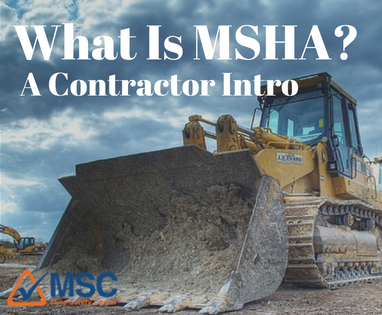 You landed your first mine contract.
You landed your first mine contract.
Great! … Now what? You’ve never dealt with mine safety regulations before and you’re overwhelmed with all the questions that need answers: What does MSHA stand for? What is MSHA? What’s the difference between MSHA and OSHA? How do I avoid these giant MSHA fines I’ve hears about? How do I get everyone in my company MSHA compliant and ready for work? What is MSHA training? What questions should I ask but don’t even know to ask?
The amount of info you need for MSHA compliance can be overwhelming, I absolutely agree.
The good news is you’re asking questions (and smart questions to boot).
The second part of the good news? You’ll get answers to all those questions (and more) on the Mine Safety Center’s site.
What Does MSHA Stand For? And What is MSHA?
MSHA stands for the Mine Safety and Health Administration. MSHA is an agency in the Department of Labor and was created when Congress passed the Federal Mine Safety and Health Act of 1977. MSHA strictly enforces the safety and health regulations (including the corresponding paperwork) within the Mine Act at all mining and mineral processing operations in the United States, no matter how big or small.
The Mine Act was the first time mine safety training became mandatory in the U.S. It also instituted many other essential safety rules through the 30 CFR Part 56 and 57 standards.
For more, here is former MSHA inspector and Mine Safety Center expert, Kim Redding:
What Is MSHA’s Mission?
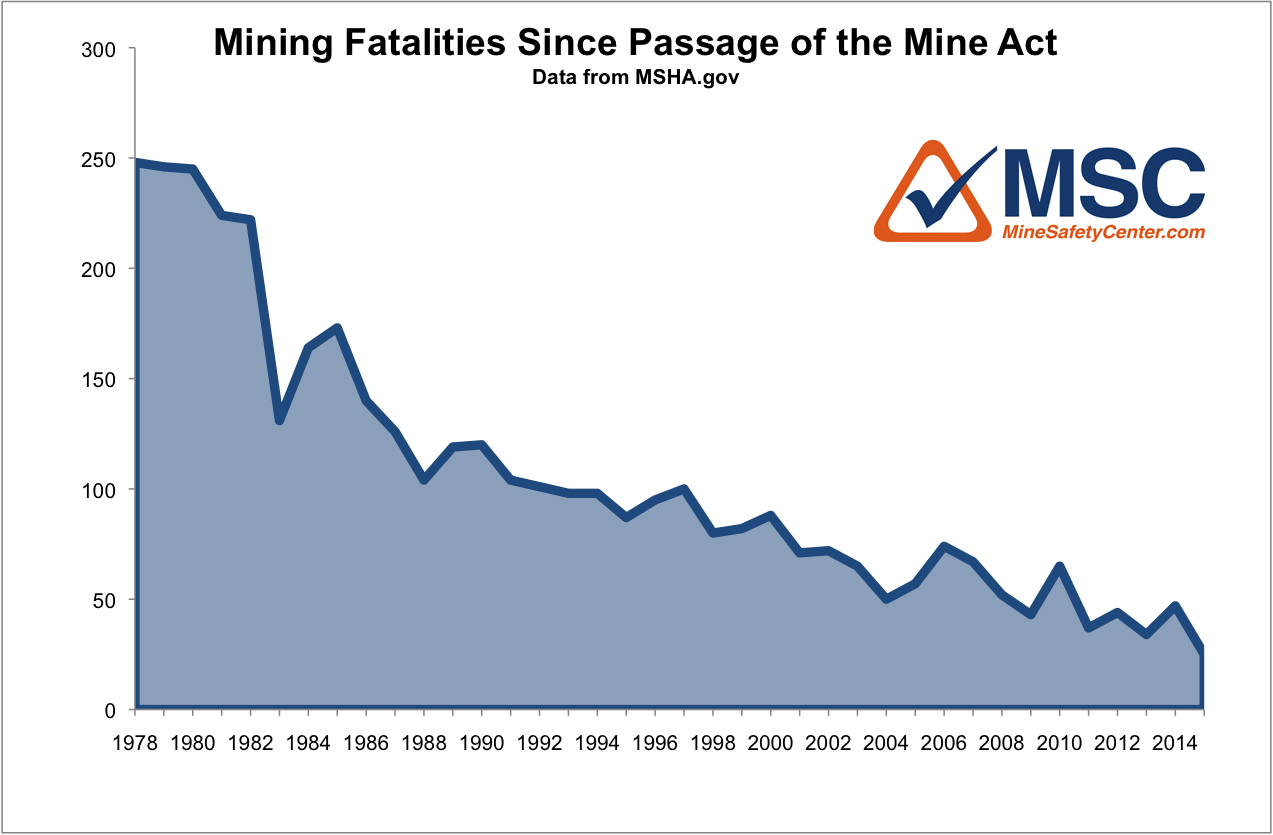 MSHA’s mission is to prevent deaths and injuries at America’s mines. According to the fatality data they’re doing something right.
MSHA’s mission is to prevent deaths and injuries at America’s mines. According to the fatality data they’re doing something right.
MSHA enforces the law through a mixture of inspections, education, and outreach. Since 2010 there has been a heavy emphasis on inspections and writing violations.
What is MSHA’s Contractor Authority? Does MSHA Regulate Contractors Too?
Does MSHA regulate contractors as well as miners? Yes, MSHA regulates anyone that conducts work on a mine, regardless of the type of work performed.
Note: A miner is any person, including operators or supervisors, who works at a mine and who is engaged in mining operations. This definition includes independent contractors and employees of independent contractors who are engaged in mining operations and any construction worker who is exposed to hazards of mining operations.
Everyone must comply with MSHA regulations, from the mine owner to the guys refilling the vending machines.
The Mine Act gives MSHA much broader oversight and stronger enforcement capability than OSHA. On an OSHA work site, a contractor may go his whole career without seeing an OSHA inspector. OSHA inspectors usually don’t show up unless there is a hazard complaint or an accident with a serious injury or fatality. But under the Mine Act, surface mines must be inspected no less than twice per year and underground mines are inspected no less than four times a year.
Officially, contractors must receive comprehensive training if they are exposed to hazards of mining operations for frequent or extended periods. But lately, MSHA seems to have expanded their definition of “frequent.”
Recently we’ve conducted a lot of New Miner MSHA training for contractors who have been doing jobs at the same mines for 20 years. Why? Mines are under pressure from MSHA. Last year MSHA declared an emphasis on contractor compliance and mines are attempting to make sure they have their bases covered.
MSHA and OSHA – What’s The Difference?
This is a big topic that deserves its own post. But I feel it should be briefly addressed here. The major differences between MSHA and OSHA are:
- MSHA has an Open Search Warrant for every mine in the U.S. You must let them inspect anything they request. If you refuse you get an automatic $50,000 fine and the inspector will come back with Federal Marshals
- A minimum of two inspections every year
- MSHA Inspectors can close a mine without a court order
- MSHA can institute civil penalties (also known as personal MSHA fines) against management that must be paid with their own money. It’s illegal for companies to pay civil fines.
- MSHA can institute criminal penalties for accidents even when an incident doesn’t involve a fatality.
- Miners may bring discrimination cases against a company based on safety complaints.
So What Is MSHA Again?
What does MSHA stand for? The Mine Safety and Health Administration. What is MSHA? MSHA was created to keep everyone working on a mine safe – and the fatality statistics show they have. But MSHA can also cost companies a lot of money if they’re not compliant.
That brings us to the next big question:
What do we need to do so we can start work? How do we get MSHA Compliant?
Mine Fatalities – 100 Years of Progress
Mine fatalities in the U.S. have dropped precipitously since the first regulatory agency was established in 1910. As 2015 comes to a close let’s look back and see the progress in 3 charts. All data comes from MSHA.gov.
The Long View
In 1917, 3,679 men left for work never to return home. The average number of mining fatalities from 2011 to 2015 was 38. While 1 life lost is 1 too many, we must acknowledge the astounding progress in mine safety. Fatalities have decreased nearly 10,000% in less than 100 years.
The sheer number of mine fatalities in the early 20th century is staggering. On average 2866 mining deaths occurred every year between 1915 and 1930, nearly 8 each day. 8 families losing a father, son, or brother every day. That’s unimaginable now.
Mine Fatalities After the Mine Act
The Federal Mine Safety and Health Act, or Mine Act, was passed in late 1977. This large and important piece of legislation brought all U.S. mines under federal jurisdiction and implemented a significant number of safety regulations. The Mine Act has far-reaching ramifications throughout the U.S. mining industry.
Significant provisions include:
- Mandatory safety training
- Annual inspections of all surface mine
- All underground mines are required to have mine rescue teams
Let’s take a look at mine fatalities in the decades since the Mine Act was enacted:
A substantial effect is apparent. Since the Mine Act’s passage, deaths have significantly decreased. Mine fatalities dropped by 53% from the decade before the Mine Act was passed to the decade after.
Before the Mine Act:
Average of 356 mine fatalities per year between 1967 and 1976
After the Mine Act:
Average of 189 mine fatalities per year between 1978 and 1987
Progress Since 2000
Finally, let’s look at the beginning of the 21st century.
Another significant drop. Mine fatalities have gone down 63% from the first half of the century to the second. From 85 deaths in 2000 to 45 in 2014 and 25 in 2015.
Substantial progress has been made, but even one death is too many. Mine operators and employees will continue to work towards that goal.

